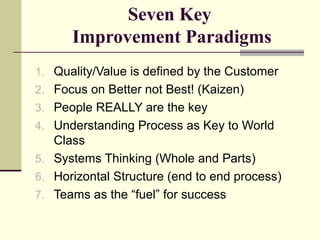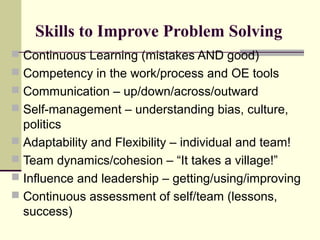This document discusses visualizing excellence through paradigms, people, processes, and problem-solving. It outlines seven key improvement paradigms including defining quality through the customer, continuous incremental improvement, focusing on people, process-centric thinking, systems thinking, horizontal structures, and effective teams. It then discusses the four P's of excellence - paradigms, people, processes, and problem-solving and provides details on each.























